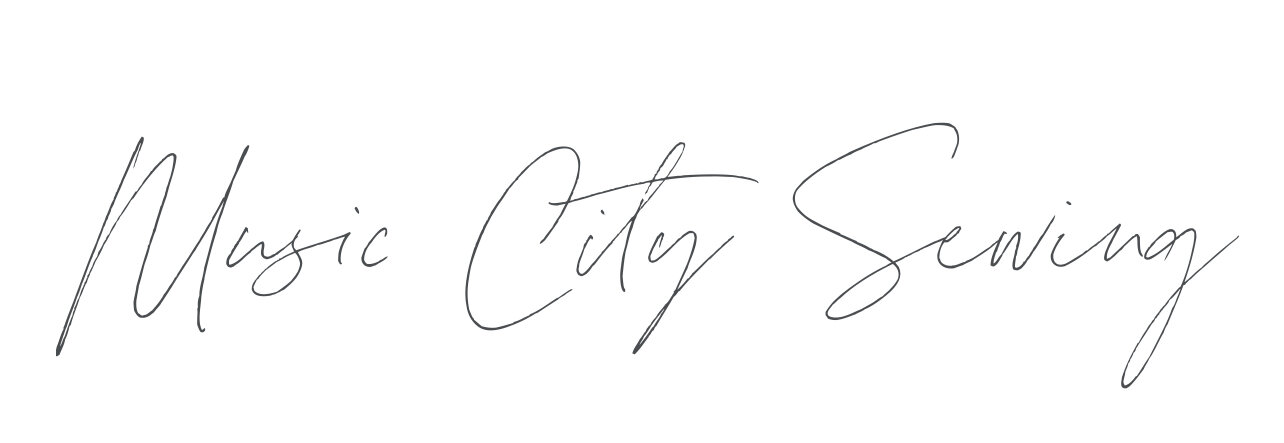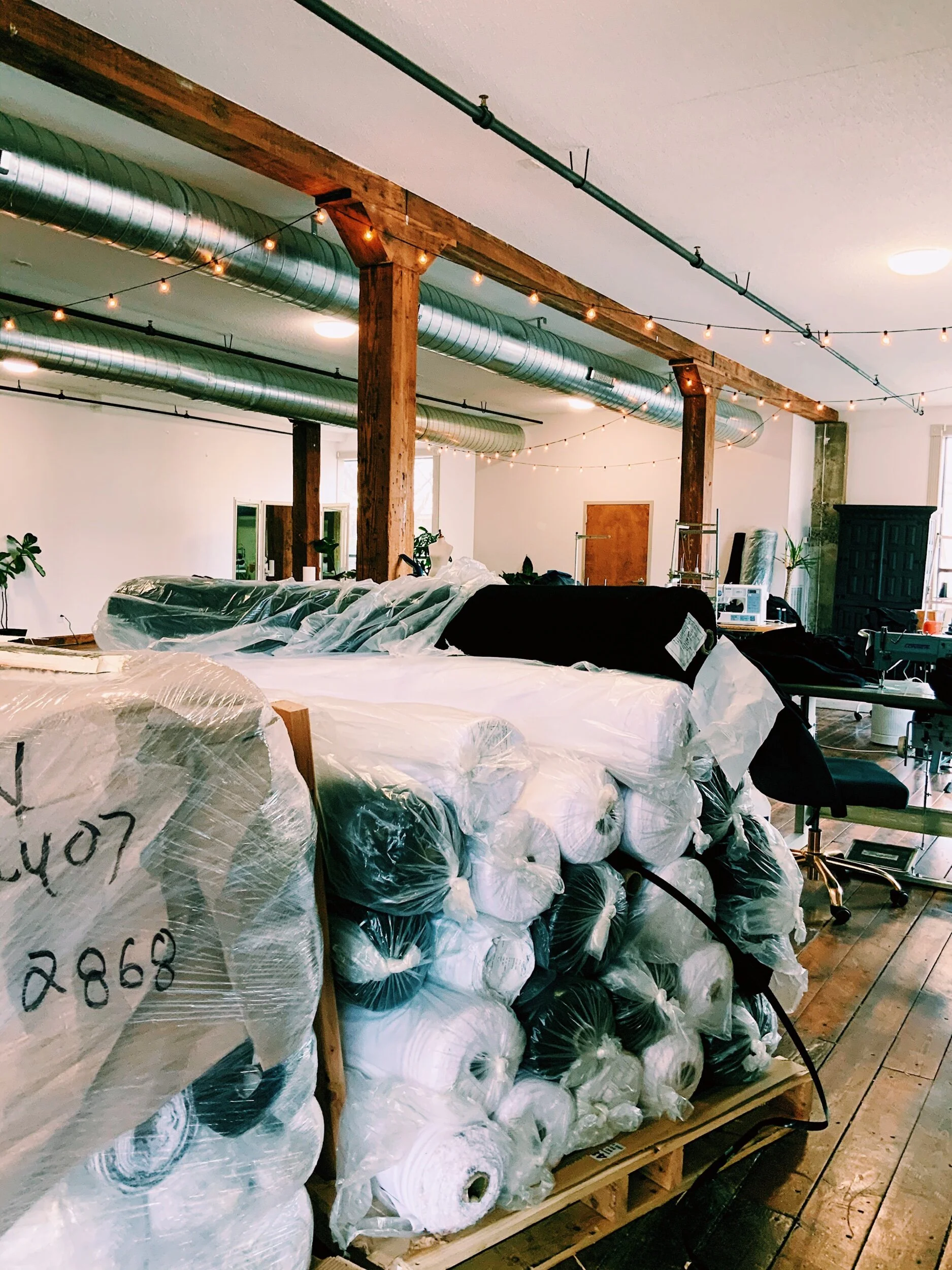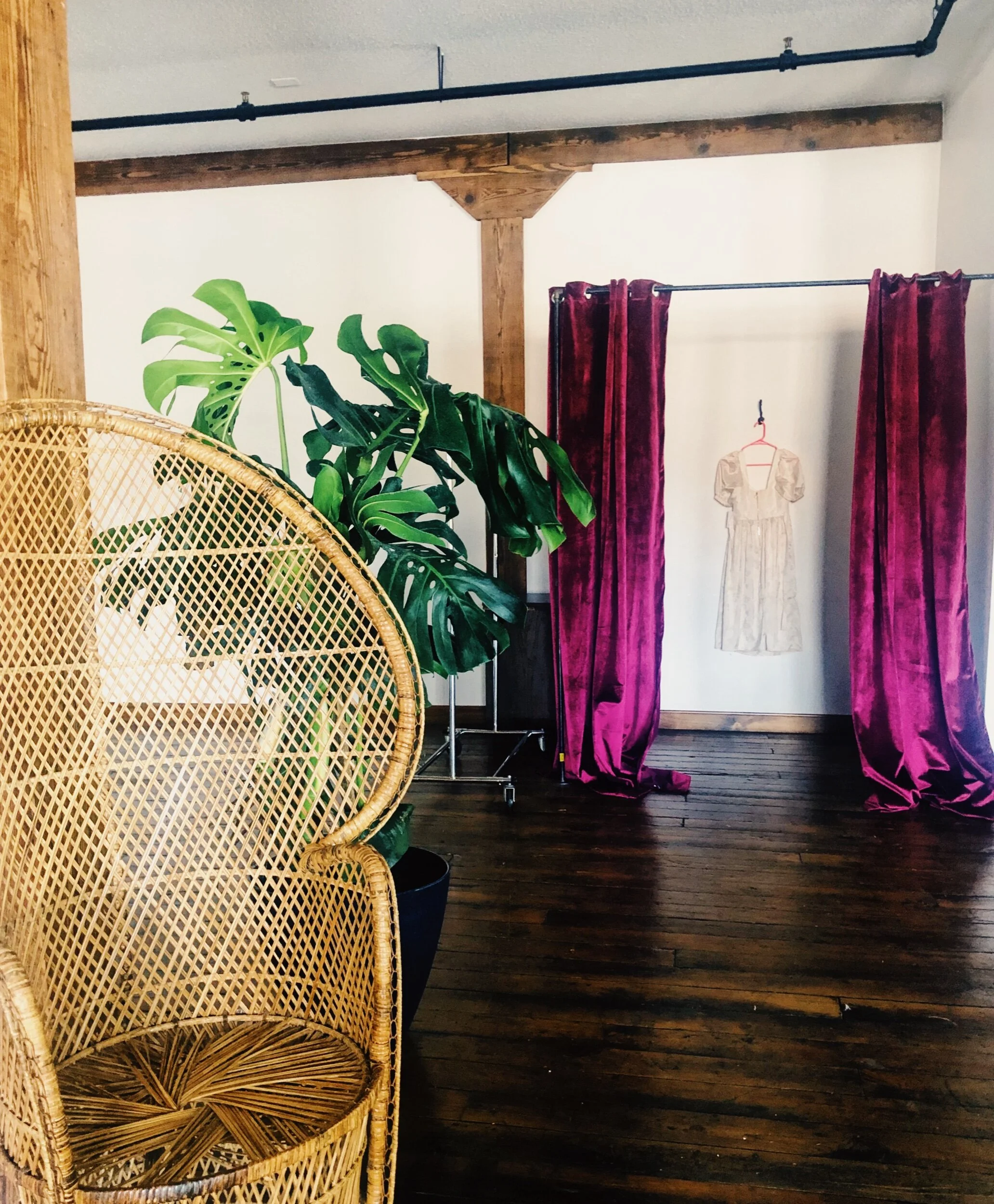How to set up a sewing space like a manufacturer
While sewing is a hobby for many, others depend on organization and flow to profit from their stitches. What better way to increase your speed / sewing flow than by hacking your sewing space?
Check out my 5 tips for setting up shop like a cut-and-sew manufacturer.
Sewing Stations
While this won’t apply if your sewing space is just a table, it will if your profit depends on cutting down the seconds in between each step.
If you make the same product repetitively, then you’re repeating a process over and over again. If you know that you’re going to serge right after you cut, position your serger to be closer to the cutting table.
Organizational psychology findings show that we’re more productive by setting things up in a circular flow. Think through each task as if it were on a clock, and organize your workspace so that you aren’t zig-zagging or drawing stars’ across that clock to get the job done.
Store tools outside of the clock.
Whether it’s just you, or you have a team helping you, it’s not fun when you have to cut through your productivity zone to grab a different pair of scissors, a razor blade, a new sewing needle, etc.
In our shop keep all our drafting tools (dressmakers curve, straight rulers, pattern drafting paper) next to the table, and everything else just outside our ‘clock’.
Find sustainable solutions for every step.
Tons of tiny fabric scraps? Donate them to an Etsy maker who needs pillow stuffing.
Birds nests of thread cuttings? Cut them 3-4x before you throw them away so they break down quicker.
There’s usually one to two changes in every step you can make to make things just a little greener for the planet.
Bed elevators.
Get em. Your back will thank you. Ideally your table should be taller than hip height if you’re constantly cutting. Otherwise, you’ll feel the burn between your shoulders and lower back.
Put your work table on bed elevators to correct the height.
Batch your sewing by fabric type.
At MCS, we get a lottttttt of different projects. Unfortunately for us, it can take hours 😩 to switch the tension and stitches in our machines to be able to handle sewing our next project. If we don’t do that step, the garment won’t hold together like it should.
So whether we’re fitting in samples or coordinating the manufacturing of a small batch, we’re going to batch similar fabric types together. For example, we’ve been sewing knitwear for months (2020 was the year of athleisure and loungewear). We also have been getting requests for silk products and super lightweight chiffons. Sewing cotton knits is NOTHING like sewing either of those two, so running a sample of either right in the middle of a manufacturing run that needs every machine kicking, is going to create a major bottleneck. While that sample might only require 2 hours of sewing, the project could take 6, and then cost us time on the original project just getting the machine dialed in back to sewing what we were before.
By scheduling those samples in around others that have similar fabrics, there's less time lost to getting handmade garments into the hands of our clients.
Store fabrics by weight/stretch.
This is similar to above. When you have a pattern for knits, you don't want to go digging through denims or cottons to find that ONE delicious knit at the very bottom of the pile, just because you organized by fabric color.
Group textiles together and organize them by how many yards you have, that way, you know which patterns will work with which fabrics, and you know if you have enough yardage without having to pull it out and unfold it (and be crushed when you know it would be PERFECT but it's 1/4 yard to little!)
This way, all your lightweight linens and cottons are together, your knits and stretch polyesters are together, and your spandex is all stored in the trash (kidding).
Was this helpful??
P.S. If you sew, you may find resources you love on our owner’s personal website, https://krystaldouglas.com .
That’s where she shares more insight into entrepreneurship, sewing, and running craft-based businesses.



